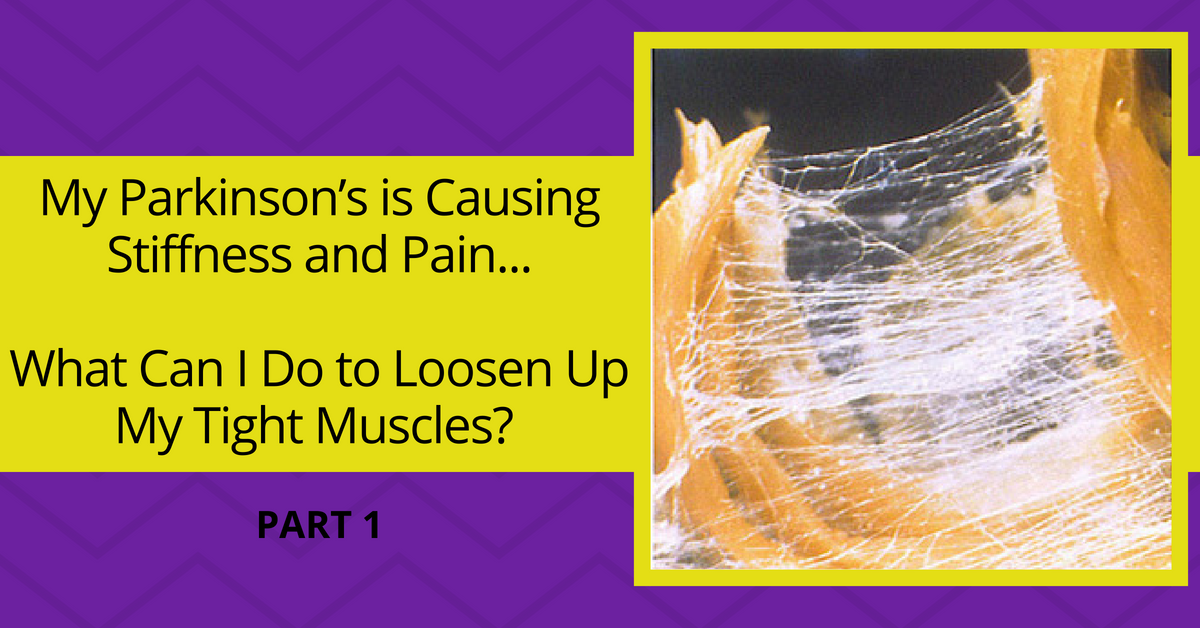
Fascia is a thin sheath of fibrous tissue which forms one continuous structure in the body. It has an appearance similar to a spider’s web, and it densely covers and penetrates every muscle, bone, nerve, artery, vein, internal organ, the brain, and spinal cord. This means the entire body is connected to every other part by the fascia. Fascia plays an important role in the support and function of our bodies.
In the normal healthy state, the fascia is relaxed and wavy in configuration, with the ability to stretch and move without restriction. With trauma, age, and certainly Parkinson’s disease, the fascia loses its pliability and becomes tight, restricted, and a source of tension to the rest of the body. Myofascial restrictions can produce tensile pressures of approximately 2,000 pounds per square inch on pain sensitive structures that do not show up in x-rays, myelograms, CAT scans, electromyography, etc. Continue reading “My Parkinson’s is Causing Stiffness and Pain. What Can I Do to Loosen Up My Tight Muscles? Part 1”



